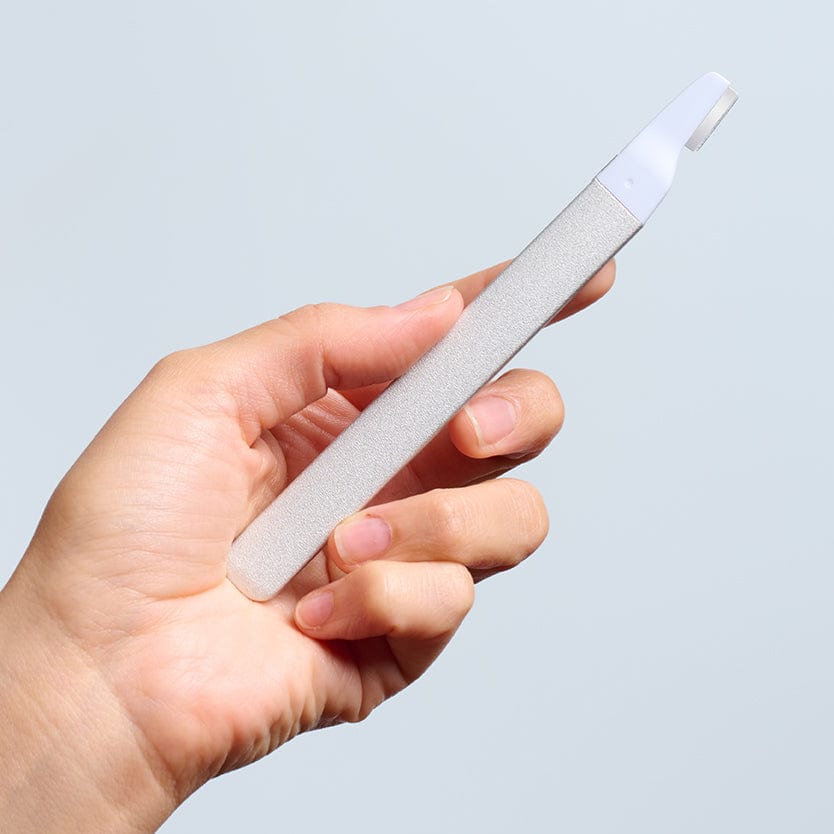Skin School Class 4: Exfoliation 101
Written by Kerry Benjamin

Think of exfoliation as your one stop shop for instantly radiant skin. This skincare fundamental clears away dead skin cells to reveal brighter, more even skin– lifting dark spots, minimizing breakouts, and encouraging healthy collagen along the way. Let's take a look at how exfoliation earned its stripes as a must-have in any skincare routine, the different ways to exfoliate, and how to do it the right way for fresher, healthier skin.
What is Exfoliation?
Let’s start with the basics: your skin renews itself every 28-90 days (see chart below), shedding dead skin cells to reveal the newer cells underneath. This natural regeneration process is called skin cell turnover and it’s what helps your skin look bright, plump and radiant. However, our skin isn’t always able to effectively shed dead skin on its own and skin cell turnover slows as we age, taking longer and longer to regenerate. When dead cells pile up, it can make your skin look dull and make fine lines and wrinkles more pronounced. Dead skin cells also accumulate in the pores, causing breakouts, enlarged pores and blackheads. Exfoliating helps speed up your skin’s natural renewal process by clearing away dead cells to promote clearer, brighter, younger-looking skin.
| Age | Turnover Cycle |
|---|---|
| Infants/Children | 3-5 Days |
| Teens | 10-21 Days |
| 20's | 14-21 Days |
| 30's | 28-45 Days |
| 40's | 45-60 Days |
| 50's+ | 60-90+ Days |
Benefits of Exfoliation
By speeding up your skin’s cell turnover timeline, exfoliation improves skin texture, brightens dark spots and supports collagen to keep skin looking plump and firm. By clearing dead skin build-up in the pores, exfoliating can also reduce acne, control oil production, and minimize the look of pores. Removing dead skin also makes way for your other skincare products to penetrate more efficiently and helps makeup glide on more smoothly, giving your skin the maximum benefits from the products you love.
Types of Exfoliation: Chemical vs. Physical
There are two types of exfoliation: physical and chemical. Mostly found in peels, chemical exfoliation relies on skin-friendly exfoliating acids or enzymes to break down the sticky bonds between dead skin cells so they shed more effectively. Physical exfoliation involves the use of a tool or a grainy scrub to manually remove dead skin cells.
Types of Exfoliants
Name |
Type of Exfoliant |
What It Is |
Who It's Best For |
How Often to Use It |
What Else You Need to Know |
|---|---|---|---|---|---|
| Alpha Hydroxy Acids (AHAs) • Lactic Acid • Glycolic Acid • Mandelic Acid • Malic Acid • Citric Acid |
Chemical | Found naturally in dairy and sugary fruits, AHAs are water-soluble chemical exfoliants that help evenly dissolve dead skin cells, promoting an instantly brighter complexion. |
Dry skin
|
1-5x weekly | AHAs can be irritating to some skin types, so it’s better to start slowly to gradually build up comfort. |
| Beta Hydroxy Acids (BHAs) • Salicylic Acid |
Chemical | BHAs are oil-soluble acids that go deep into the pores to remove dead cells, balance oil production, and clear out acne-causing bacteria. |
Oily skin
|
1-5x weekly | Not recommended during pregnancy. |
| Enzymes • Papain • Bromelain |
Chemical | Found in fruits like pineapples or papaya, enzymes work in a similar way to AHAs but affect just the surface of the skin. |
Sensitive skin
|
1-5x weekly | Pregnancy-safe alternative to BHAs. |
| Scrubs • Sugar • Salt • Walnut Shell • Pumice |
Physical | Often formulated with nut shells or abrasive minerals, these exfoliators rely on tiny particles to physically scrub away dead skin cells. | Literally no one | Never | Scrubs can create microtears in the skin that compromise the skin’s moisture barrier and trigger redness and irritation. |
| Dermaplaning | Physical | A tool that physically removes a layer of dead skin cells and stubborn peach fuzz. | Dry, dull skin. | 1x weekly | Not recommended for use on active pustular acne. |
How Often to Exfoliate
Your personal tolerance for exfoliation is just that…personal. Start by using peels once per week and work your way up by adding an additional application every week. Some chemical exfoliants are stronger than others, so look to the instructions for guidance. While chemical exfoliation does cause more dead skin cells to shed, it does not always cause visible peeling or flaking so keep that in mind when you’re assessing a new product.
People with oily skin tend to tolerate exfoliation better and can use chemical exfoliants up to 5 times per week. If you have drier skin or a tendency towards redness and irritation, you might only be able to exfoliate once weekly. If you’re dealing with stubborn hyperpigmentation or chronically congested skin, pair dermaplaning with a peel once a week to help the brightening and clarifying acids penetrate deeper into your skin.
About the Author

Kerry Benjamin, a licensed aesthetician, has over 14 years of experience. Kerry is the driving force behind StackedSkincare. As the company's CEO, Kerry has dedicated her career to revolutionizing skincare. Her innovative approach combines peels, serums, and specialized tools to effectively address a wide range of skin concerns. CA LE license number Z98459.

